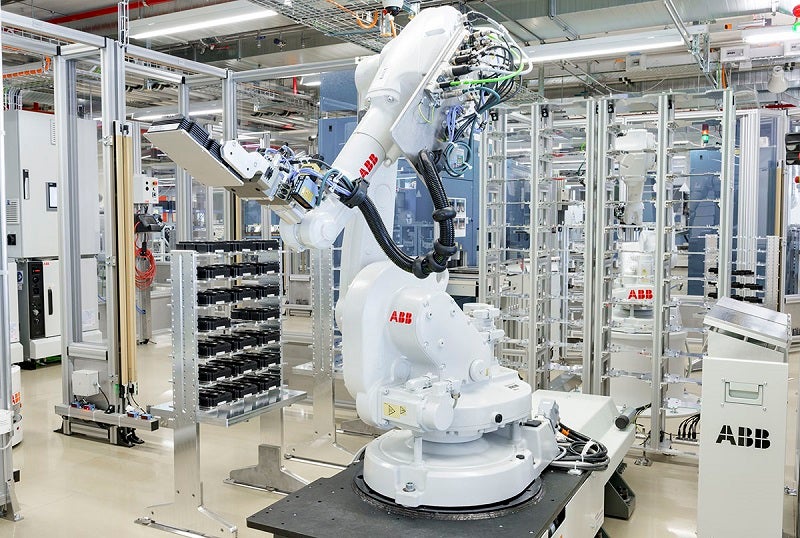
ABB is a Swiss-Swedish technology multinational, operating primarily in the robotics, automation and electrical equipment areas. Niklas Persson is the managing director of ABB’s grid integration business line, which incorporates ingegrated systems solutions for the DC (direct current) and AC (alternating current) fields.
Umar Ali (UA): What makes the technology you develop special?
Niklas Persson (NP): What makes our semiconductors special is that they’re tuned specifically for their applications. It’s not the standard off-the-shelf application that you have to engineer around. This is engineered for the system, which makes it highly controllable and highly reliable with low losses. I think that that’s the area where we can really see a big benefit.
The automated systems we use to manufacture them help with that, especially around quality and yield and predictability, which are very important qualities for us.
UA: A big thing these semiconductors are used for is grid integration. How has the process of grid integration changed over the last few years?
NP: What has changed, and it has come quite quickly, in the last year is that we have gone from a traditional utility business with a very clear model of how to buy and how to supply into a more dynamic area.
Especially with renewable energy, which is an intermittent power source and a large project that needs a new form of collaboration between buyer and supplier. That’s an area where we need to collaborate more as an ecosystem, between the supplier and buyer and policymakers, and that has changed quite a lot.
At the same time that technology has advanced several steps, so we are now prepared to take on the challenge and integrate renewables.
UA: What has been the most exciting development for you, technologically speaking?
NP: In HVDC [high-voltage direct current] we have now systems that can transmit power up to 12 gigawatts. I think that that’s a huge stepping stone.
If you take this smarter technology and pair it with greener technology, it creates a system which has a lower CO2 impact. You can control the whole power flow, as well as ancillary services such as voltage and frequency. Using that technology to as an enabler for renewable integration is just fantastic.
UA: What do you think would be the biggest challenge for energy companies and countries, in terms of renewable energy?
NP: The challenges are more around the regulatory framework in some instances.
The EU has done quite a good job in in terms of putting policies and financing in place and, and driving an agenda that is helping the progress quite a lot. But then there also needs to be a regulatory framework around how, for example, we use wind power for more than one country. It’s a big area to start to regulate and have legislation around.
And then of course, there’s the whole bottleneck of creating an infrastructure onshore that can distribute power. The social acceptance of new infrastructure is something that we have to work with. I think the biggest challenge is really making sure onshore infrastructure is part of the network to take care of renewable energy.
Another challenge is that it’s not “either or” when we talk about microgrids and the HVDC systems they connect to, we need both. Managing the big changes that are needed to make the integration of both parts happen will be challenging, in terms of ensuring competence and educating more people to ensure it’s executed right.
UA: Do you think Europe is doing enough to reach its various ambitious emissions targets?
NP: Last week Wind Europe published a report on what needs to be done in Europe which is quite supported by the ecosystem; the EU Commission, the transmission solution owner, and suppliers.
So there is an ambition, the vision is clear and everybody’s behind it. Now what this ambition needs is a political framework and education. And there we can do more.
We need to start asking questions like “how can a wind farm out in the sea be shared between countries or even companies?”
So how can we tap into a huge wind farm when sometimes the wind energy is needed in the UK or the Netherlands or in Germany? That regulatory framework is not there. So the mechanics to trade energy between countries and companies is not necessarily in place today, and one area we need to advance.
UA: If you could give one message the energy industry as a whole about renewables, what would you say?
NP: I think I would say that the technology for renewable energy is here and we are ready to support it. We just need to make sure that we are working on the critical bottlenecks, which are the regulatory frameworks.
And we need support from the public to make sure we can integrate renewable energy, and that needs a lot of actions early on in schools and universities.
The technology is there, we’re ready to support from a supply perspective, we just need policy-makers to put the regulatory framework in place and educate the people.



